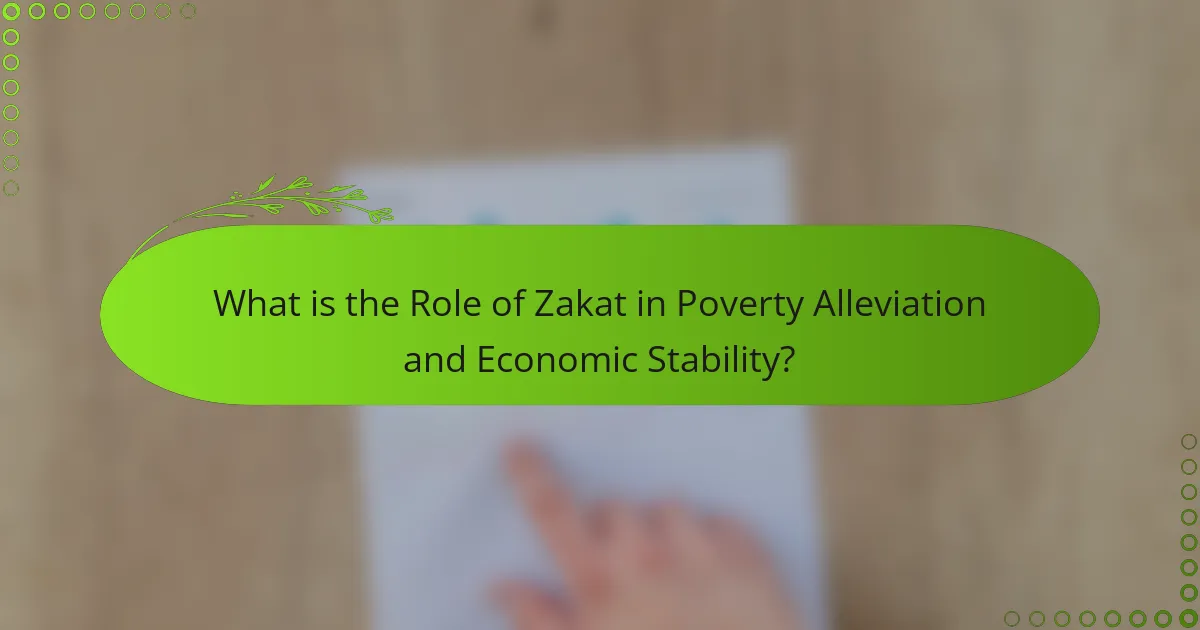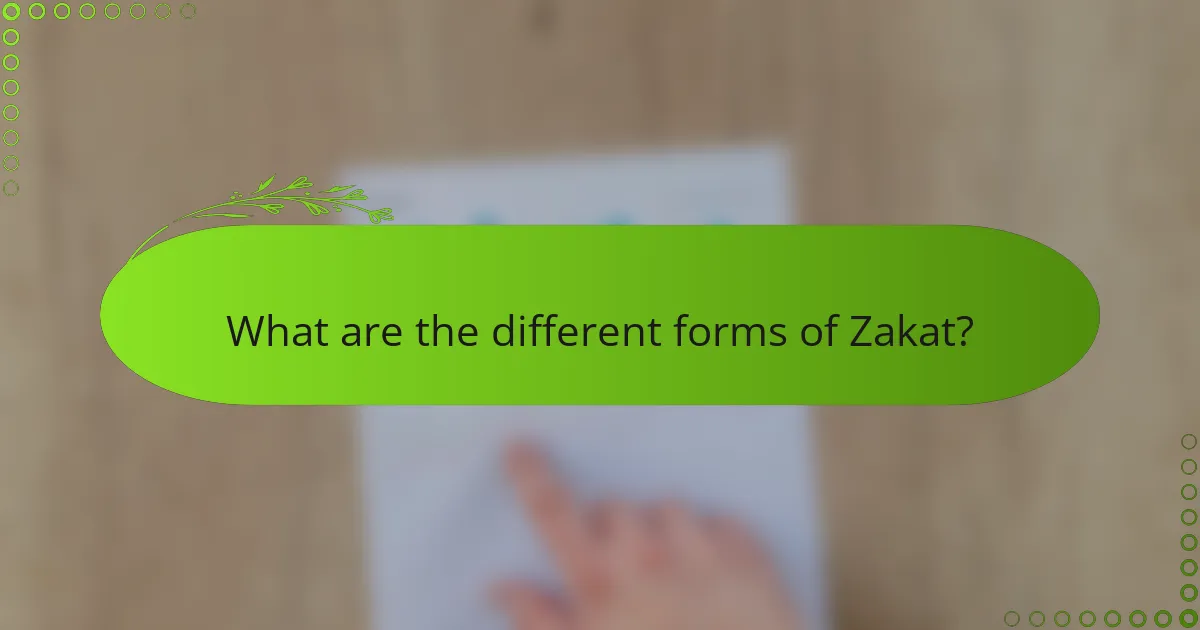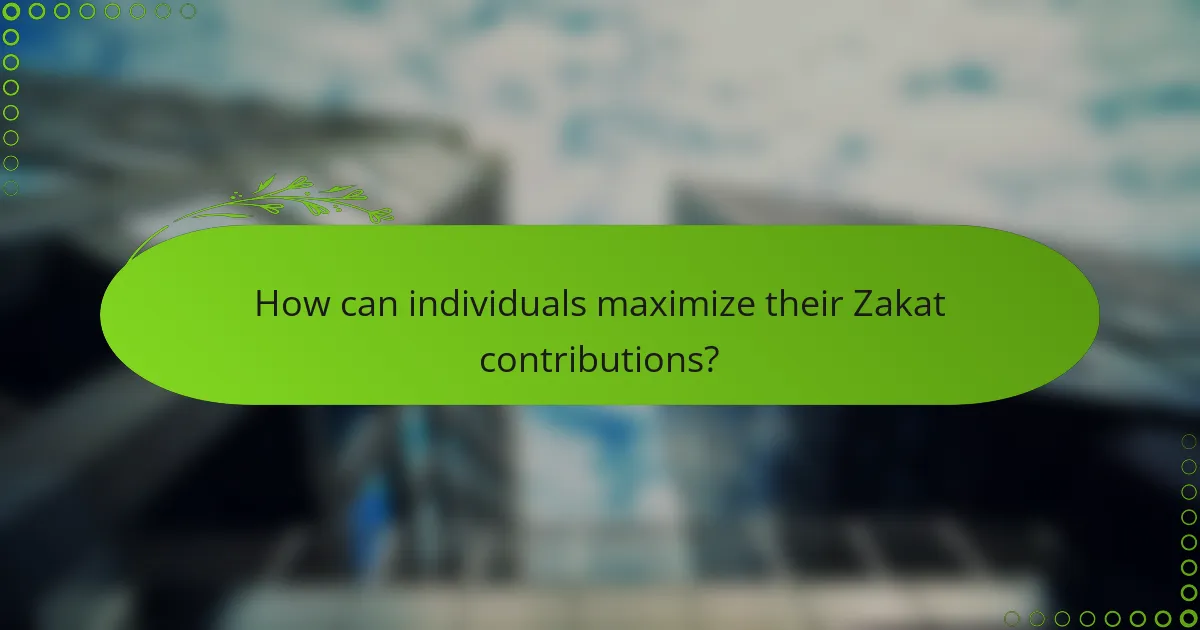
What is the Role of Zakat in Poverty Alleviation and Economic Stability?
Zakat plays a crucial role in poverty alleviation and economic stability. It is an obligatory form of almsgiving in [censured], aimed at redistributing wealth. By mandating that Muslims give a portion of their savings, typically 2.5%, Zakat helps to support the needy. This financial support can directly improve living conditions for impoverished individuals and families.
Studies, such as those conducted by the Islamic Research and Training Institute, show that Zakat can significantly reduce poverty levels. In various communities, Zakat funds have been used to provide education, healthcare, and small business loans. These initiatives create job opportunities and stimulate local economies.
Moreover, Zakat fosters a sense of community and social responsibility. It encourages wealthier individuals to contribute to the welfare of society. This collective effort enhances social cohesion and economic resilience. Overall, Zakat serves as a vital tool for promoting both social justice and economic stability within communities.
How does Zakat contribute to poverty alleviation?
Zakat contributes to poverty alleviation by redistributing wealth within the community. It mandates Muslims to give a portion of their savings to those in need. This financial support directly assists low-income individuals and families. Zakat helps meet basic needs such as food, shelter, and healthcare. According to the World Bank, increased Zakat contributions can significantly reduce poverty levels. Studies indicate that Zakat payments can uplift entire communities by fostering economic stability. By enhancing access to resources, Zakat encourages self-sufficiency among recipients. This cycle of giving promotes social cohesion and collective responsibility.
What are the historical foundations of Zakat in Islamic finance?
Zakat is a religious obligation in [censured] that has historical roots in the Quran and Hadith. It serves as a form of almsgiving and is one of the Five Pillars of [censured]. The Quran mandates Zakat as a means to purify wealth and support the needy. Historical records indicate that Zakat was practiced during the time of Prophet Muhammad. The Prophet established a system for collecting and distributing Zakat in the early Muslim community. This system aimed to address poverty and promote social welfare. Over centuries, Islamic scholars have elaborated on the principles of Zakat, emphasizing its role in economic justice. The historical foundations of Zakat illustrate its significance in fostering communal support and economic stability.
How is Zakat calculated and distributed among the needy?
Zakat is calculated as a fixed percentage of a Muslim’s savings and wealth. The standard rate is 2.5% of accumulated wealth over a lunar year. This includes cash, gold, silver, and business assets. Muslims must first assess their total wealth to determine the amount owed. Once calculated, Zakat is distributed to eligible recipients, including the poor, needy, and those in debt. Distribution can occur directly to individuals or through charitable organizations. Many Muslims choose to give Zakat during Ramadan, enhancing its significance. This practice aims to alleviate poverty and promote social welfare in the community.
Why is Zakat considered essential for economic stability?
Zakat is considered essential for economic stability because it redistributes wealth within society. This redistribution helps reduce poverty levels. It provides financial support to those in need, stimulating local economies. Increased spending power among the poor boosts demand for goods and services. This demand can lead to job creation and economic growth. Additionally, Zakat encourages saving and responsible financial behavior among the wealthy. It fosters a sense of community and social responsibility. Historical evidence shows that societies with strong Zakat practices experience lower income inequality. Overall, Zakat plays a crucial role in maintaining economic balance and social cohesion.
What impact does Zakat have on community welfare?
Zakat significantly enhances community welfare by redistributing wealth to those in need. It provides financial support to the impoverished, reducing poverty levels within communities. This redistribution fosters social cohesion and solidarity among community members. Additionally, Zakat funds can be used for education and healthcare, improving overall community well-being. Historical data shows that communities practicing Zakat experience lower rates of inequality. The World Bank reports that such practices can lead to enhanced economic stability. By directly addressing the needs of the underprivileged, Zakat plays a crucial role in uplifting community welfare.
How does Zakat influence economic redistribution?
Zakat influences economic redistribution by mandating a portion of wealth to be given to those in need. This practice redistributes wealth from the affluent to the less fortunate. It aims to reduce poverty and inequality within society. Zakat is typically calculated as 2.5% of an individual’s savings and assets. By redistributing this wealth, Zakat helps to provide essential services and support to impoverished communities. Studies show that regions with higher Zakat contributions experience improved economic stability. This stability is evident in increased access to education and healthcare for the needy. Thus, Zakat plays a crucial role in fostering a more equitable economic environment.
What are the challenges faced in implementing Zakat effectively?
The challenges faced in implementing Zakat effectively include lack of awareness, poor management, and insufficient infrastructure. Many individuals are not fully aware of their Zakat obligations or the process of calculation. This leads to underpayment or misallocation of funds. Poor management of Zakat funds can result in inefficiencies and waste. Additionally, there is often a lack of proper infrastructure to distribute Zakat to those in need. This includes inadequate tracking systems for beneficiaries. Furthermore, cultural differences can impact the understanding and practice of Zakat. Some communities may have varying interpretations of Zakat, complicating uniform implementation. Finally, regulatory challenges can hinder the effective collection and distribution of Zakat. These challenges collectively impede the potential impact of Zakat on poverty alleviation and economic stability.
What barriers prevent effective Zakat collection and distribution?
Barriers that prevent effective Zakat collection and distribution include lack of awareness, poor infrastructure, and regulatory challenges. Many potential donors are unaware of their Zakat obligations. This lack of knowledge leads to under-collection. Poor infrastructure hinders the efficient distribution of Zakat funds. In some regions, logistical issues complicate the delivery of aid to those in need. Regulatory challenges also create obstacles. Inconsistent laws across regions can restrict Zakat collection efforts. These barriers collectively undermine the effectiveness of Zakat in alleviating poverty.
How can technology improve Zakat management?
Technology can improve Zakat management by enhancing transparency and efficiency. Digital platforms facilitate tracking donations and disbursements in real-time. Blockchain technology ensures secure and immutable records of transactions. Mobile applications enable easy access for donors to contribute and for recipients to receive funds. Data analytics can identify areas of need and optimize resource allocation. Automated systems can streamline the calculation of Zakat obligations based on individual assets. Additionally, online awareness campaigns can educate the public about Zakat’s importance and encourage participation. These advancements can lead to increased trust and participation in Zakat initiatives.

What are the different forms of Zakat?
The different forms of Zakat include Zakat al-Mal, Zakat al-Fitr, and Zakat al-Tamlik. Zakat al-Mal is the obligatory almsgiving on wealth and assets. This form is typically calculated at 2.5% of savings annually. It applies to cash, gold, silver, and business assets. Zakat al-Fitr is given at the end of Ramadan. It is a fixed amount per person, often in the form of food or its monetary equivalent. Zakat al-Tamlik refers to the Zakat on wealth that one has acquired. This form emphasizes the necessity of giving on newly acquired assets. Each form serves to purify wealth and support those in need, reinforcing the social welfare system in Islamic societies.
How do the types of Zakat differ in purpose and application?
The types of Zakat differ in purpose and application primarily through their specific categories and intended beneficiaries. Zakat al-Fitr is obligatory and is given at the end of Ramadan to purify fasting and assist the needy. It is typically a fixed amount per person and aims to ensure that all Muslims can celebrate Eid al-Fitr. Zakat al-Mal, on the other hand, is a wealth tax on accumulated assets and is calculated annually based on a percentage of one’s wealth. It aims to redistribute wealth and alleviate poverty.
Zakat al-Mal can be allocated to various categories, including the poor, the needy, and those in debt. This flexibility allows individuals to direct their contributions based on specific community needs. Additionally, there are specialized forms of Zakat, such as Zakat on agricultural produce or livestock, which have unique calculations and purposes. These variations reflect the diverse economic contexts in which Zakat operates.
The application of Zakat also varies by region and community needs. In some areas, Zakat funds are pooled and distributed by local organizations, while in others, individuals may give directly to recipients. This adaptability enhances its effectiveness in addressing poverty and promoting economic stability in different contexts.
What is the difference between obligatory and voluntary Zakat?
Obligatory Zakat is a mandatory form of charity required from Muslims, calculated as a specific percentage of wealth. It is typically 2.5% of savings and is required to be paid annually. This form of Zakat aims to purify wealth and support those in need. Voluntary Zakat, on the other hand, is a non-mandatory form of charity that individuals can give at their discretion. It can be given in any amount and at any time, based on personal choice and circumstances. Both forms aim to help the less fortunate, but obligatory Zakat has specific requirements while voluntary Zakat does not. The distinction is rooted in Islamic teachings, emphasizing the importance of both forms in promoting social welfare.
How does the nature of Zakat differ across various cultures?
Zakat varies significantly across cultures in its implementation and significance. In Middle Eastern countries, Zakat is often institutionalized and regulated by the government. This ensures a systematic collection and distribution process. In South Asian cultures, Zakat is frequently handled at the individual level, emphasizing personal responsibility and community support.
In African nations, local customs influence how Zakat is perceived and practiced. Community-based approaches are common, focusing on mutual aid and solidarity. In Western contexts, Zakat is increasingly recognized as part of Islamic philanthropy, often integrated with broader charitable activities.
The differences in cultural practices can affect the amount and frequency of Zakat given. For instance, in some cultures, it may be obligatory to give a specific percentage annually. In others, the practice may be more flexible, allowing for voluntary contributions based on personal circumstances.
These cultural variations impact the overall effectiveness of Zakat in poverty alleviation and economic stability. Understanding these differences can enhance the approach to Zakat and its role in different societies.
What role do organizations play in facilitating Zakat?
Organizations play a crucial role in facilitating Zakat by acting as intermediaries between donors and beneficiaries. They help collect and distribute Zakat funds effectively. Many organizations provide transparency and accountability in the Zakat process. This builds trust among donors and encourages more contributions. Additionally, organizations often conduct outreach and education about Zakat’s importance. They help ensure that funds reach those in need, particularly in impoverished communities. According to the Islamic Development Bank, organized Zakat collection can significantly increase the total amount of Zakat distributed. This structured approach enhances poverty alleviation efforts and promotes economic stability.
How do NGOs and charities enhance Zakat’s impact?
NGOs and charities enhance Zakat’s impact by efficiently distributing funds to those in need. They identify vulnerable populations and assess their specific requirements. This targeted approach ensures that Zakat reaches those who are most affected by poverty. NGOs often have established networks and resources for effective outreach. They provide additional support services, such as education and healthcare, which complement financial assistance. Research indicates that organizations like the Islamic Relief Worldwide have successfully mobilized Zakat for community development projects. These projects not only alleviate immediate financial burdens but also promote long-term economic stability. By leveraging their expertise, NGOs maximize the effectiveness of Zakat in addressing poverty.
What best practices should organizations follow in Zakat management?
Organizations should follow best practices such as transparency, accountability, and proper allocation in Zakat management. Transparency involves clear reporting on Zakat funds and their usage. Accountability ensures that organizations are responsible for their actions regarding Zakat distribution. Proper allocation means identifying the most effective ways to distribute Zakat to those in need. Regular audits can help maintain transparency and accountability. Engaging with the community can enhance understanding of local needs. Training staff on Zakat principles improves management efficiency. Collaborating with other organizations can increase the impact of Zakat initiatives.

How can individuals maximize their Zakat contributions?
Individuals can maximize their Zakat contributions by calculating their Zakat accurately. They should assess their total wealth, including cash, investments, and assets. The standard Zakat rate is 2.5% of eligible wealth. Setting reminders for annual Zakat calculations can ensure timely contributions. Individuals can also consider giving Zakat in kind, such as food or clothing, to meet immediate needs. Supporting local charities can enhance the impact of contributions. Research shows that effective Zakat distribution can significantly reduce poverty levels. Engaging in community discussions about Zakat can provide insights into effective giving strategies.
What strategies can individuals adopt for effective Zakat giving?
Individuals can adopt several strategies for effective Zakat giving. First, they should calculate their Zakat accurately based on their wealth. This involves understanding the Nisab threshold, which is the minimum amount of wealth one must possess before being obligated to give Zakat. Next, individuals can prioritize giving to local charities that directly support their community. This ensures that their contributions have a direct impact on those in need nearby.
Additionally, individuals should consider setting up a regular giving schedule. This can be monthly or annually, ensuring that Zakat is given consistently rather than sporadically. They can also utilize technology to streamline their Zakat contributions. Many organizations offer online platforms for easy calculation and donation.
Furthermore, individuals are encouraged to educate themselves about the recipients of their Zakat. Knowing who benefits from their giving can enhance the sense of purpose and accountability. Lastly, it is beneficial to keep records of Zakat payments for personal tracking and future reference. This helps in ensuring that they meet their obligations annually.
How can individuals assess the needs of their community for Zakat distribution?
Individuals can assess the needs of their community for Zakat distribution by conducting surveys and interviews. They should engage with community members to identify specific needs. Local organizations can provide valuable insights into poverty levels and resource gaps. Analyzing demographic data can highlight areas of high need. Observing local economic conditions helps to understand the broader context. Collaborating with social service agencies can enhance understanding of urgent requirements. Utilizing existing Zakat funds data can inform about past distributions and their impact. These methods ensure targeted and effective Zakat allocation.
What resources are available to help individuals calculate their Zakat?
Various resources are available to help individuals calculate their Zakat. Online calculators are commonly used for this purpose. Many Islamic organizations provide these tools on their websites. Mobile applications specifically designed for Zakat calculation are also widely available. These apps often include features to track assets and liabilities. Additionally, educational materials such as guides and articles explain the calculation process. Community workshops and seminars frequently offer in-person assistance. Many mosques provide resources and support for Zakat calculation as well. These resources ensure that individuals can accurately fulfill their Zakat obligations.
What are the long-term benefits of consistent Zakat contributions?
Consistent Zakat contributions provide significant long-term benefits for poverty alleviation and economic stability. They enhance community welfare by redistributing wealth. This redistribution helps reduce income inequality over time. Increased access to resources enables the poor to improve their living conditions. Enhanced living conditions lead to better health and education outcomes. Zakat also stimulates local economies through increased spending power. Studies show that regions with higher Zakat contributions experience reduced poverty rates. For example, research indicates a correlation between Zakat distribution and improved economic stability in various communities.
How does regular Zakat giving foster community development?
Regular Zakat giving fosters community development by redistributing wealth and supporting local initiatives. It provides financial assistance to those in need, enhancing their quality of life. This support can lead to improved education and healthcare access. When communities invest in these areas, overall development accelerates. Zakat also encourages social cohesion by promoting a sense of responsibility among community members. Studies show that communities with active Zakat practices experience lower poverty rates. This creates a more stable economic environment, benefiting everyone involved. Regular Zakat contributions can fund projects that address specific local challenges, such as infrastructure improvements.
What personal benefits can individuals gain from fulfilling their Zakat obligations?
Individuals can gain spiritual fulfillment and a sense of community from fulfilling their Zakat obligations. Fulfilling Zakat purifies wealth and helps individuals feel more connected to their faith. It fosters empathy towards the less fortunate, enhancing personal compassion. Studies show that charitable giving can improve mental well-being and life satisfaction. Zakat encourages responsible financial management, as individuals must assess their wealth regularly. This practice cultivates a habit of generosity, which can lead to more charitable actions in the future. Additionally, fulfilling Zakat can strengthen social ties within the community, promoting a sense of belonging. Overall, these benefits contribute to personal growth and a deeper understanding of social responsibility.
Zakat is a fundamental Islamic practice that mandates almsgiving to support the needy and promote economic stability. This article explores the role of Zakat in poverty alleviation, highlighting its impact on community welfare, economic redistribution, and social cohesion. It discusses the historical foundations of Zakat, its calculation and distribution methods, and the challenges faced in effective implementation. Additionally, the article examines the various forms of Zakat, the influence of organizations in facilitating its impact, and strategies for individuals to maximize their contributions. Overall, Zakat serves as a vital tool for enhancing social justice and economic resilience within communities.